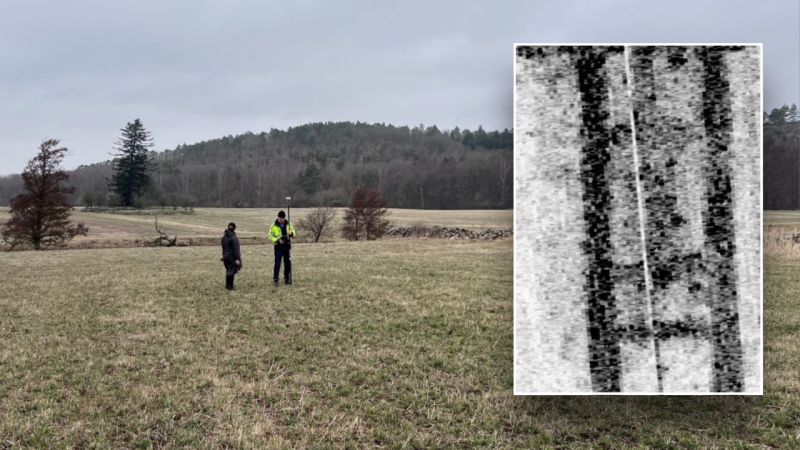
A Swedish history enthusiast’s hobby has led to an incredible archaeological discovery. While poring over 18th-century maps, Göran Bengtsson noticed an unusual rectangular symbol marked “Klosterkullen,” or “monastery hill,” on a 1760 map. Intrigued, he brought the map to the attention of Arkeologerna, a Swedish government-affiliated archaeological organization. This seemingly small detail proved to be the key to unlocking a significant piece of history.
Following Bengtsson’s lead, archaeologists employed ground-penetrating radar (GPR) at the designated location in Derome, southwest Sweden. The GPR scan revealed the clear outlines of walls, strongly suggesting the presence of medieval monastery ruins. The discovery stunned archaeologist Bengt Westergaard, a veteran of 40 years in the field, who described the find as “something unique,” emphasizing the exceptional clarity of the visible wall structures.
The favorable weather conditions contributed to the discovery. The dry summer enabled the formation of crop marks, making the walls clearly visible from above ground. This fortunate circumstance, combined with the precise location pointed out by Bengtsson’s map analysis, allowed for a remarkably efficient excavation. Archaeologists uncovered walls approximately 6.5 feet thick, along with other structural elements that experts believe are the remains of pillar foundations and possibly part of a dormitory and eastern wing.
Further analysis suggests that these ruins may represent the original site of Ås Abbey, a significant Cistercian monastery later relocated in the 13th century. A letter from 1243 documents the abbot’s request to move the monastery, lending credence to this theory. However, the extent of the original building remains uncertain; archaeologists believe that construction may have been halted before completion.
This discovery adds another fascinating chapter to Sweden’s rich history, following recent finds such as a 12th-century grave containing buried treasure and an unusual Viking-era coffin. The meticulous work of a history enthusiast coupled with advanced archaeological techniques has once again brought a piece of the past into the light, demonstrating the enduring power of curiosity and collaboration in uncovering history’s secrets.










